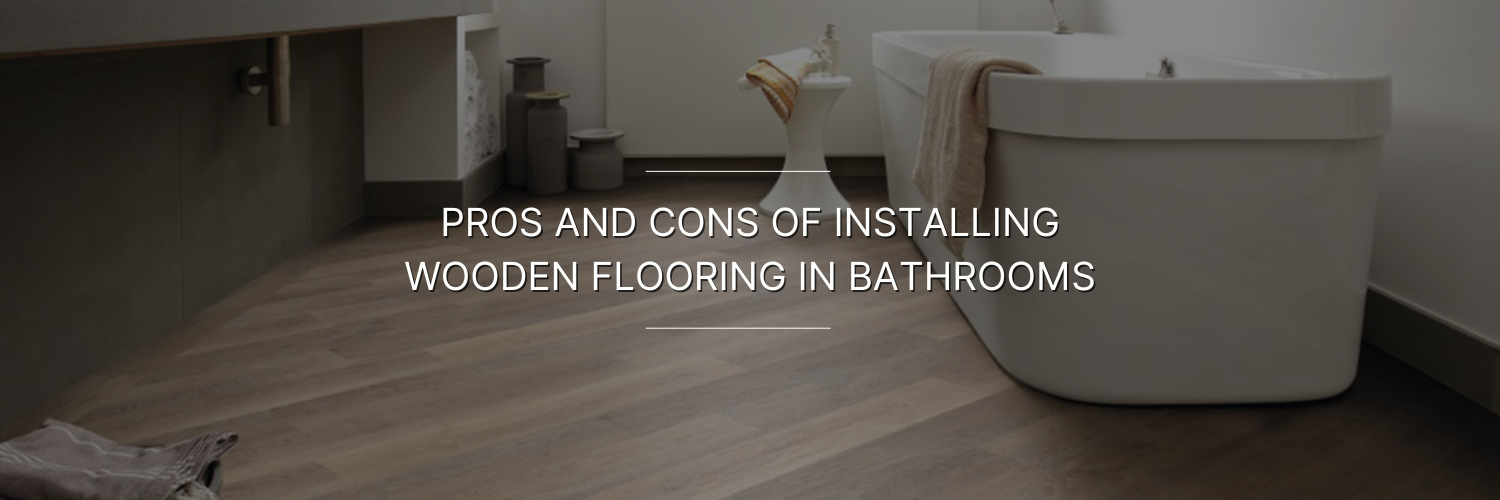Wooden floorings bring undeniable warmth, elegance, and character to a space. Traditionally seen in living rooms, bedrooms, and hallways, hardwood floors and laminated wooden floorings are now making their way into bathrooms too. But is it a good idea? As more homeowners explore design trends like spa-style bathrooms and minimalist interiors, the idea of installing hardwood floors in wet zones is becoming increasingly popular. If you’re considering this for your home, here’s a balanced guide to help you understand the pros and cons of wooden flooring in bathroom.
Pros of Wooden Flooring in Bathrooms
1. Aesthetically Pleasing and Timeless
Wooden floorings instantly elevate the look of any room. In bathrooms, they add a touch of luxury and spa-like comfort that tiles often lack. Whether you opt for classic hardwood floors or laminated wooden floorings, the natural texture and tones make the space feel warm, calm, and inviting.
2. Seamless Home Design
Using the same flooring throughout your home creates a seamless flow and a visually larger space. This is especially effective in smaller apartments or open-concept homes.
3. Modern Finishes Are More Durable
Thanks to technological advancements, today’s wooden laminates for floorings come with scratch-resistant and water-resistant finishes. Laminated wooden flooring with an interlocking system allows for easy installation and better water resistance, making it a viable option for low-moisture bathrooms or powder rooms.
4. Soft and Comfortable Underfoot
Unlike cold ceramic tiles, wood feels warm under your feet, especially on chilly mornings. It also provides better insulation, making it more energy-efficient over time.
Cons of Wooden Flooring in Bathrooms
1. Susceptibility to Moisture Damage
The biggest drawback of wooden floorings in bathrooms is their vulnerability to water. Spills, puddles, and steam can cause hardwood floors to warp, swell, or develop mold if not dried quickly. Bathrooms with poor ventilation are particularly risky.
2. High Maintenance
Maintaining wooden floors in a bathroom requires more care than tile or vinyl. Regular sealing and prompt cleaning of water spills are crucial to prevent long-term damage. Without proper maintenance, even scratch-resistant wooden floorings can lose their charm.
3. Not Ideal for Full Bath
While wooden laminates with waterproof layers work well in half-baths or guest powder rooms, they might not be the best choice for full bathrooms where daily showers and high humidity are common. Here, easy installation wooden floorings with water-resistant cores may offer limited protection, but still need extra caution.
4. Cost and Repairs
Wooden flooring can be expensive to install and repair. Once damaged by water, planks may need to be replaced entirely, as refinishing might not solve the issue.
Things to keep in mind while getting Wooden Flooring for Bathrooms
If you’re set on the look of wood in your bathroom but worried about moisture, consider laminated wooden flooring or engineered wood options. These mimic the appearance of natural wood but come with better water resistance and durability. At Vista, our selection includes interlocking system wooden floorings that make installation easier and help reduce water seepage between planks.
Conclusion
Wooden floors in bathroom is a bold design choice beautiful but not without risks. With the right products and precautions, it can work, especially in low-moisture or well-ventilated bathrooms. If you’re renovating or designing your bathroom and want a timeless look with modern practicality, Vista Fashions offers a variety of solutions from scratch-resistant laminates to easy-install wood flooring systems.


